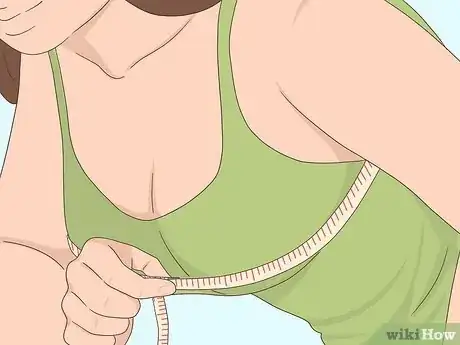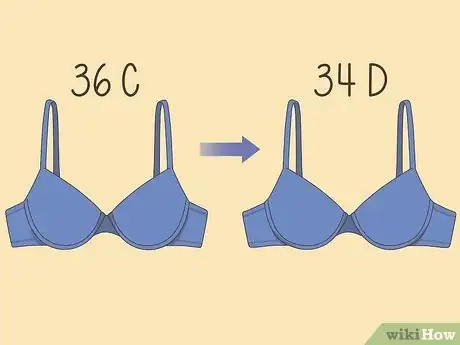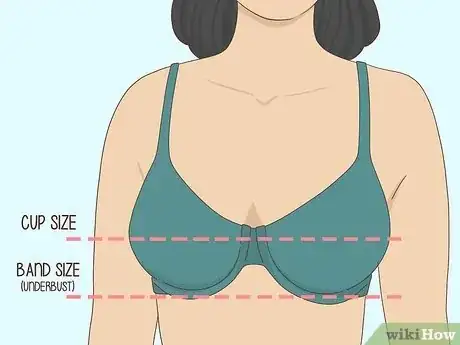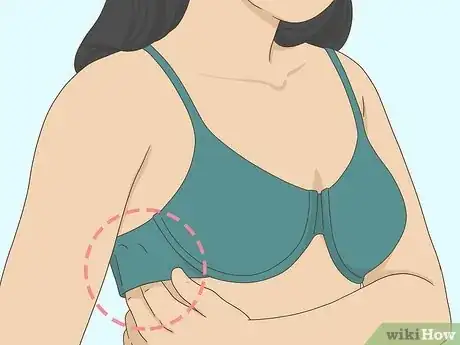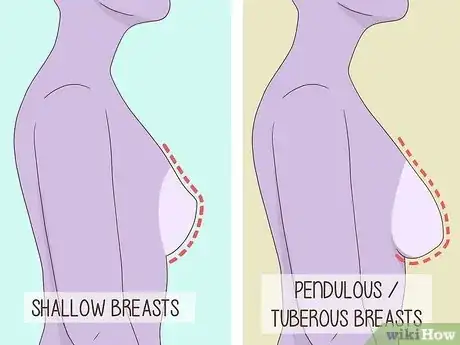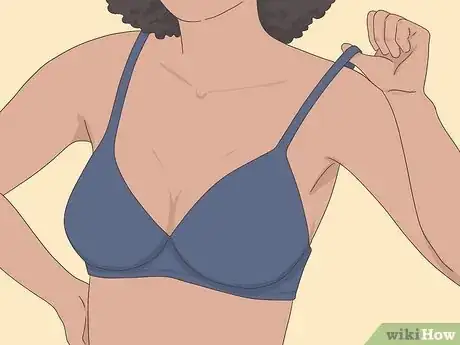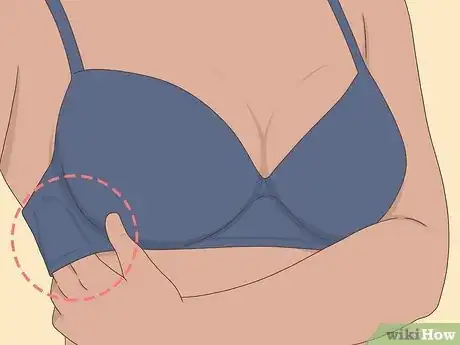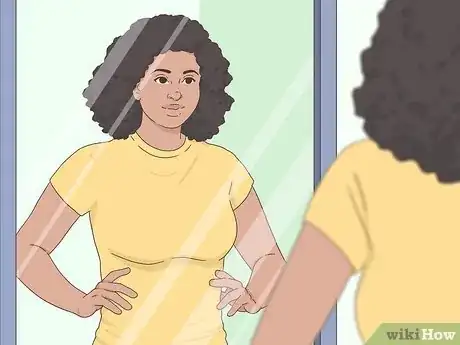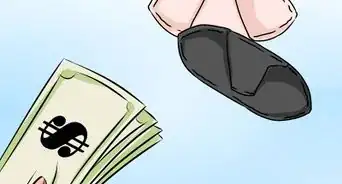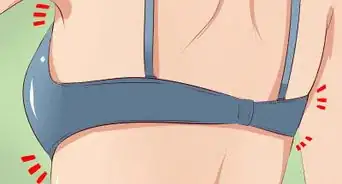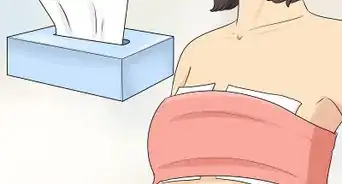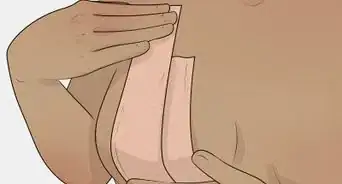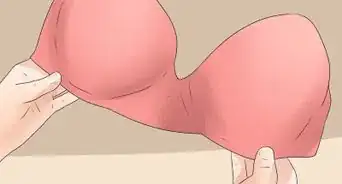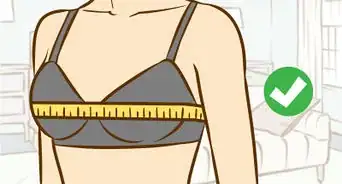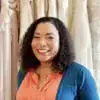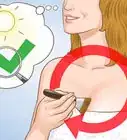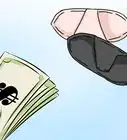This article was co-authored by Kpoene Kofi-Bruce. Kpoene Kofi-Bruce is a tailor, couture wedding gown designer, and the Creative Director of Mignonette Bridal and Ette the Wedding Tailor in Chicago, Illinois. With nearly two decades of experience as a wedding gown designer, small business owner, and vintage sewing enthusiast, Kpoene specializes in wedding gown design and the social history of wedding dresses. She received a BA in Creative Writing from Middlebury College and studied the business of fashion at the Fashion Institute of Technology. She is also a graduate of the Goldman Sachs 10KSB program and the Chicago Fashion Incubator and has written about wedding fashion for Jezebel, Catalyst, the Sun Times, and XO Jane.
wikiHow marks an article as reader-approved once it receives enough positive feedback. This article received 31 testimonials and 86% of readers who voted found it helpful, earning it our reader-approved status.
This article has been viewed 7,686,372 times.
Believe it or not, at least 80% of women wear an incorrectly sized bra! Most people wear a bra with a band that's too loose or with cups that are too small. To save you from the hassle of an ill-fitting bra, we've got all the best tips and tricks to give you an ideal fit. So, if you want to get extra comfy with a superb bra that'll be your best friend, jump right in. We've got you covered with a sizing guide that'll determine the bra size that you actually need; try it out and your sizing woes will be a thing of the past.
Things You Should Know
- Measure your band size by running a tape measure around your rib cage.
- Determine your cup size by wrapping a tape measure around your torso, writing down that measurement, and subtracting that number from your band size.
- Be aware that different breast shapes look best in specific types of bras. Wear balconette bras if you have shallow breasts or underwire bras if you have pendulous breasts.
- Wear a fitted t-shirt to check what kind of silhouette your bra gives you and to check that it's actually figure-flattering.
Steps
Modern Sizing
-
1Measure your band size. Run a tape measure around your rib cage just underneath your breasts. Make sure the tape measure is horizontal and fairly snug. Look at where the ends of the tape measure meet and check the measurement in inches. Write down this number.[1]
- If the measurement is an odd number, try out bras one inch below and one inch above your measurement. For example, if you measured 31 inches (78.7cm), your band size could be 30 or 32.
- If your measurement is an even number, then that’s usually your exact band size.
-
2Determine your cup size. Bend over so that your chest is parallel to the ground: this allows you to measure all your breast tissue. Wrap a tape measure around your torso so it’s over the fullest part of your breasts. Make sure it’s tight enough to stay in place without digging into your skin. Write down the number.[2]
- To calculate your cup size, subtract your band measurement from the cup measurement you just took. The difference between the two numbers determines your cup size:
- Less than 1 inch (2.5 cm) = AA
- 1 inch (2.5 cm) = A
- 2 inches (5 cm) = B
- 3 inches (7.5 cm) = C
- 4 inches (10 cm) = D
- 5 inches (12.5 cm) = DD
- 6 inches (15 cm) = DDD (E in UK sizing)
- 7 inches (18 cm) = DDDD/F (F in UK sizing)
- 8 inches (20.5 cm) = G/H (FF in UK sizing)
- 9 inches (23 cm) = I/J (G in UK sizing)
- 10 inches (25.5 cm) = J (GG in UK sizing)
- The majority of leading brands use UK cup sizing: AA, A, B, C, D, DD, E, F, FF, G, GG, H, HH, J, JJ, K, KK, L, LL. If you're shopping in the US you might see cup sizes such as DDD or DDDD. These are equivalent to E and F. If you're in any doubt, particularly with larger cup sizes, you can refer to an international bra sizing chart.
Advertisement - To calculate your cup size, subtract your band measurement from the cup measurement you just took. The difference between the two numbers determines your cup size:
-
3Know about sister sizes. If you find a bra that’s close to a perfect fit, try a “sister size,” which may be even more comfortable. To go down a sister size, reduce your band size by 2 and take your cup size up 1 interval. To go up a sister size, increase your band size by 2 but go down 1 interval.[3]
- For example, if you’re a 36C and go down a sister size, you’d be a 34D.
- If you are a 36C and go up a sister size, you’d be a 38B.
Sizing Basics
-
1Know that cup size is proportional to band size. One of the biggest myths is that a D cup looks the same on every band size or that having small breasts automatically means you’re an A cup. The cup size—or letter—of your bra measurement is determined by the difference between your underbust and bust measurements.
- For instance, a 32D will fill out less volume than a 36D, even if they’re both D cups. A 32D would mean that you have a 32-inch underbust and a 36-inch bust.
- A 32A would mean you have a 32-inch underbust and a 33-inch bust.
-
2Understand how a correctly fitted bra should feel. There are a few tell-tale signs that a bra fits you well. Here’s what to keep an eye out for as you measure yourself and try on different sizes:
- A snug band: The band will support your breasts. You should be able to slip 1-2 fingers under your band, but no more than that.
- Sufficient side coverage: All breast tissue should stay inside the cups and away from your armpits.
- A flat gore: The gore—the part of your bra band between the cups—should sit flat against your chest without digging into your skin.
- A smooth curve: Look for a fit that results in a clean silhouette with no stray tissue.
-
3Be aware of different breast shapes. You might be wondering: what happens if you find a bra in the right size, but it still fits wrong? You probably need the right bra cut for your breast shape. Shallow breasts fit best in balconette or demi-cup bras, while pendulous or tuberous breasts fit best in underwire bras.
Checking for Fit
-
1Put your bra on correctly. Use the “scoop and swoop” method: put your arms through the shoulder straps and lean forward so your breasts fall into the cups. Fasten the bra using the hooks and eyes. While you’re still leaning forward, hold the underwires and give them a wiggle to make sure your breasts are settled comfortably into the cups. Slip your hand into the side of each cup and lift the breast toward the cup’s center.
- You’ll probably have to adjust the length of the shoulder straps. Adjust the sliders so the straps are short enough to stay in place without digging into your skin.
-
2Check the band size. Run 1-2 fingers around the inside of the band. Your band should fit on the biggest adjustment but be too tight if you fasten it on the smallest size—bras are designed to fit like this so that you can tighten the band as the elastic starts to wear out. If the band is roomy enough for you to comfortably fasten it on the tightest adjustment, try a smaller band.
- For example, if a 32D is too loose, try going down a band size to a 30DD.
- If the band is painfully tight, try going up a cup size: for instance, go from a 28G to a 30FF.
-
3Check the cup size. If you have the correct cup size, your cups should be completely filled out; none of the fabric should wrinkle and there shouldn’t be any space in the cups. If there’s any spillage outside the cups or the appearance of a “double boob,” it’s a sign that the cup size is too small.
- Adjust your bra so the underwire sits on your ribs.
- Make sure you don’t have any armpit rolls or back rolls.
- If the underwires press into your breastbone, try a “plunge” style bra.
-
4See how your bra looks with your top on. So, you found the perfect bra—now it’s time to see what it does for your figure! Make sure your bra creates smooth lines underneath fitted clothes. Wear a fitted t-shirt and check that there aren’t any bulges of skin spilling out of your cups or the band. Stand in front of a mirror and turn to the side; your bust should be about halfway between your elbow and shoulder.
- If the color of your bra shows through a thin or light colored top, purchase a bra with seamless cups that match your skin color.
Expert Q&A
-
QuestionHow do I measure my bust for a dress?
 Kpoene Kofi-BruceKpoene Kofi-Bruce is a tailor, couture wedding gown designer, and the Creative Director of Mignonette Bridal and Ette the Wedding Tailor in Chicago, Illinois. With nearly two decades of experience as a wedding gown designer, small business owner, and vintage sewing enthusiast, Kpoene specializes in wedding gown design and the social history of wedding dresses. She received a BA in Creative Writing from Middlebury College and studied the business of fashion at the Fashion Institute of Technology. She is also a graduate of the Goldman Sachs 10KSB program and the Chicago Fashion Incubator and has written about wedding fashion for Jezebel, Catalyst, the Sun Times, and XO Jane.
Kpoene Kofi-BruceKpoene Kofi-Bruce is a tailor, couture wedding gown designer, and the Creative Director of Mignonette Bridal and Ette the Wedding Tailor in Chicago, Illinois. With nearly two decades of experience as a wedding gown designer, small business owner, and vintage sewing enthusiast, Kpoene specializes in wedding gown design and the social history of wedding dresses. She received a BA in Creative Writing from Middlebury College and studied the business of fashion at the Fashion Institute of Technology. She is also a graduate of the Goldman Sachs 10KSB program and the Chicago Fashion Incubator and has written about wedding fashion for Jezebel, Catalyst, the Sun Times, and XO Jane.
Tailor Wear a bra that is unpadded and measure above your bust (the tape will be in your armpits), at the fullest part of your bust, and then below your bust.
Wear a bra that is unpadded and measure above your bust (the tape will be in your armpits), at the fullest part of your bust, and then below your bust. -
QuestionI'm 12 and I have to figure out this whole bra fitting thing myself. Is it normal to be a B cup at my age?
 Community AnswerYes, that is certainly possible.
Community AnswerYes, that is certainly possible. -
QuestionHow do I measure my bra size without a flexible measuring tape?
 Community AnswerGet a ribbon and mark your measurements, then you can measure the ribbon with a yardstick or steel tape measure.
Community AnswerGet a ribbon and mark your measurements, then you can measure the ribbon with a yardstick or steel tape measure.
References
About This Article
To measure your bra size, first stand in front of a mirror with a non-padded bra on. Then, wrap some soft measuring tape around your torso directly under your bust, where your bra band is. If this measurement is even, add 4 to get your band size. If it’s odd, add 5 instead. Next, measure loosely around the fullest part of your bust. Make sure the measuring tape is level with the ground. Once you have both numbers, subtract your band size from the cup measurement you took to get your cup size. If the difference is less than 1 inch (2 1/2 cm), your cup size is AA. If the difference is 1 inch (2 1/2 cm), your cup size is A. Two inches (5 cm) is B, 3 inches (7 1/2 cm) is C, 4 inches (10 cm) is D, 5 inches (12 1/2 cm) if DD, 6 inches (15 cm) is F, and 7 inches (18 cm) is G. To learn what cup size you are based on the measurement you got, scroll down!

